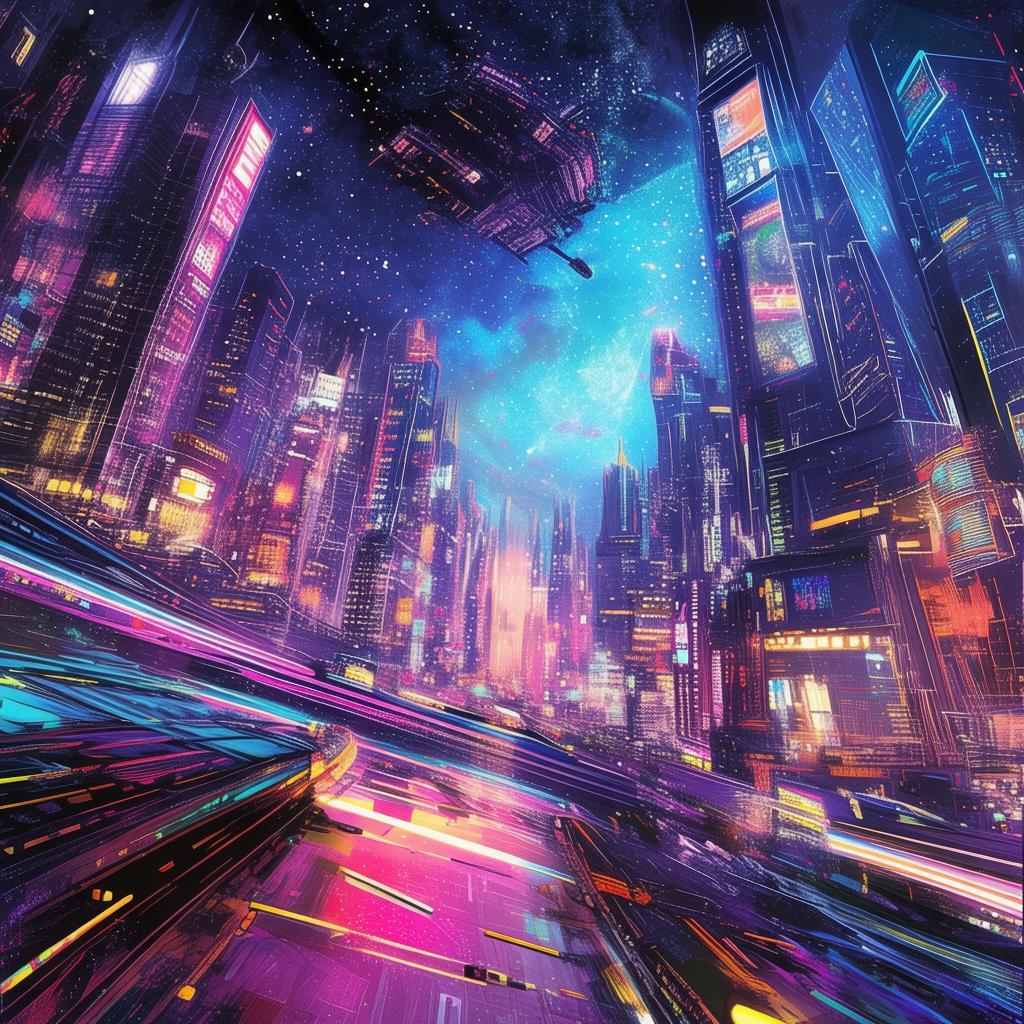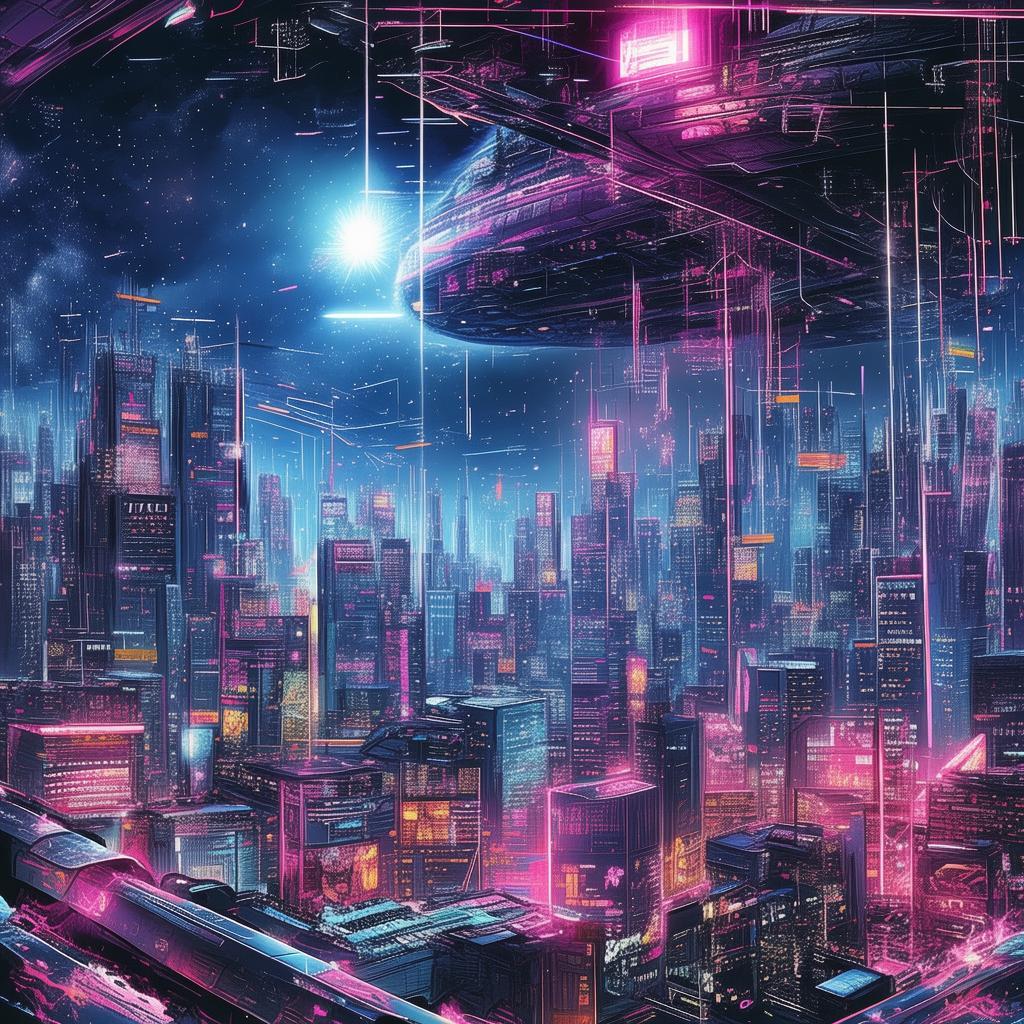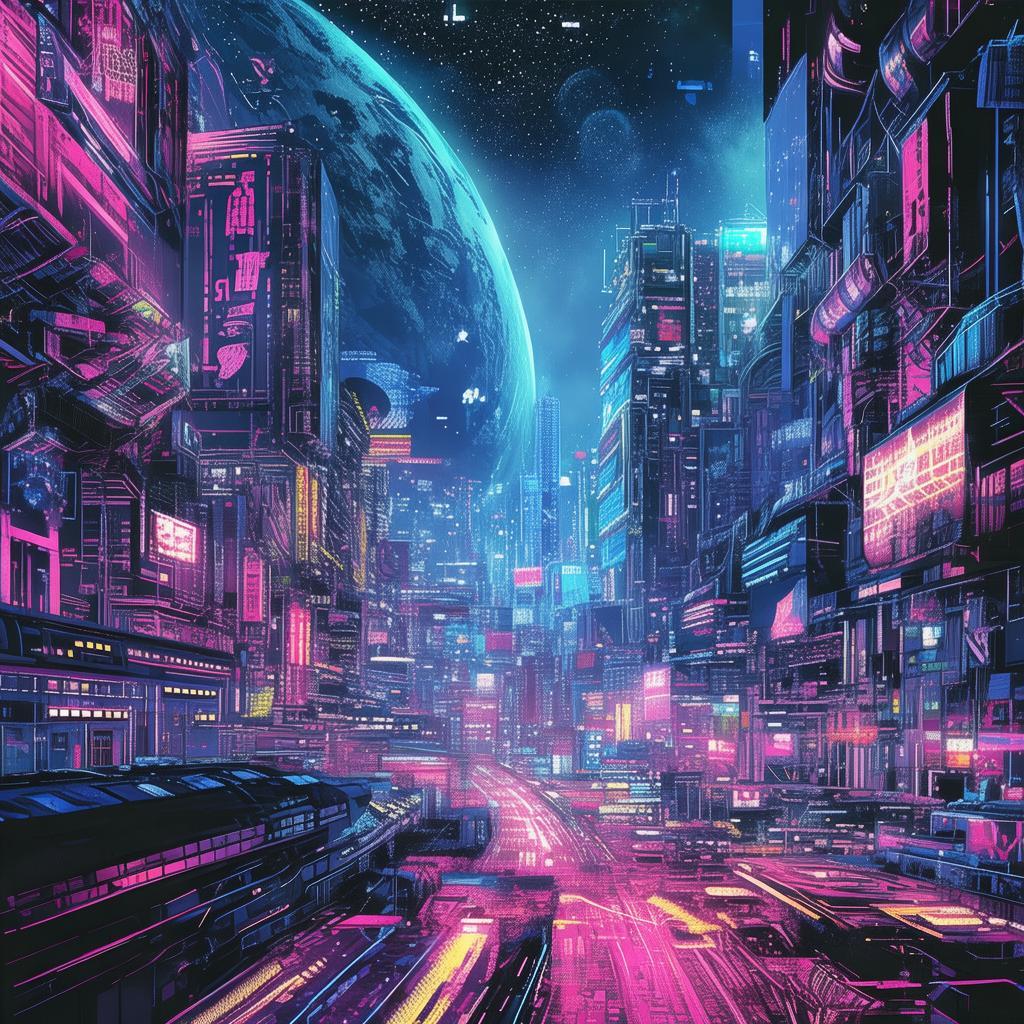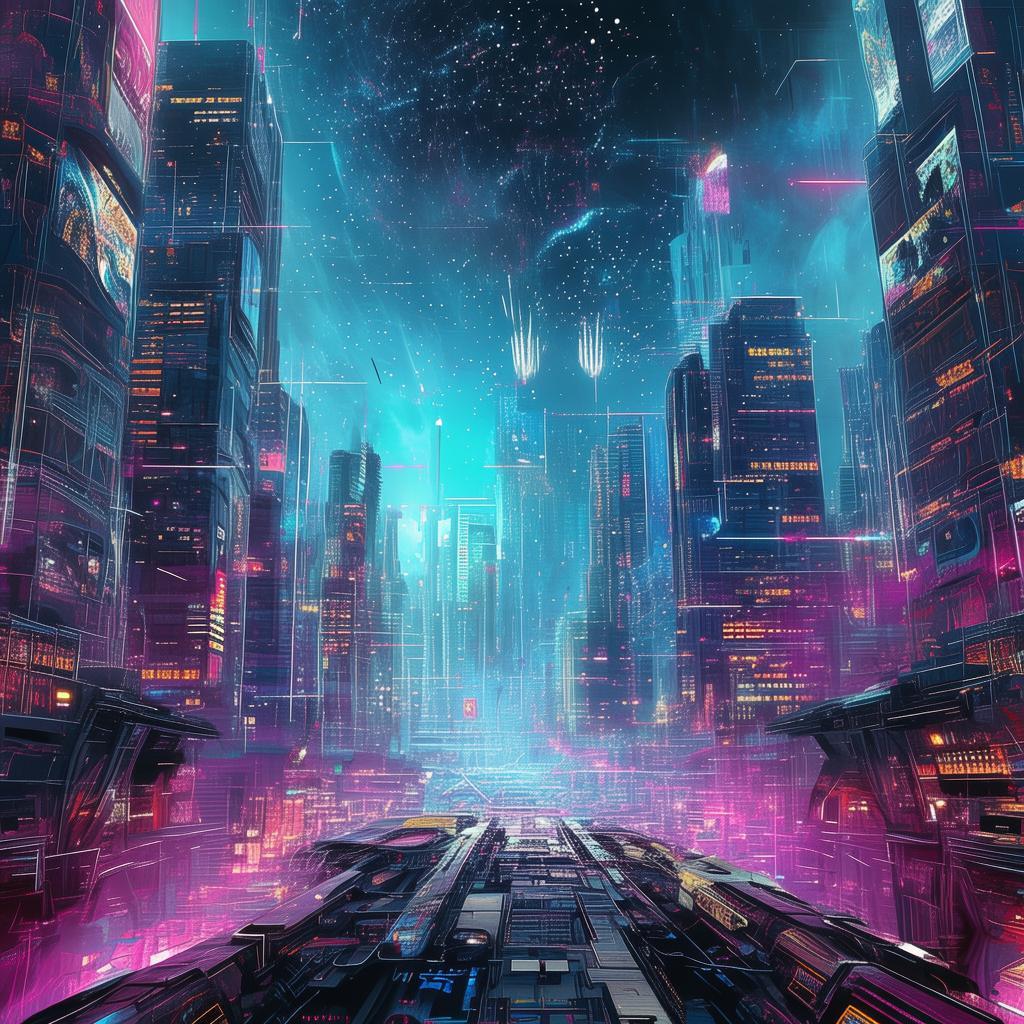The Self-Portraiture Paradox: A Reflection in Infinity
The city of Neo-Lumina was a place where time had been twisted into a web of contradictions. The air was thick with the hum of servers and the glow of screens, each a portal to a reality that could be as real or as fictional as the user chose. In the heart of this digital metropolis, there was a young artist named Kael, whose greatest masterpiece was his own image.
Kael was known for his self-portraits, not the traditional oil-on-canvas kind, but digital avatars that he crafted and lived with in the virtual reality of Neo-Lumina. His latest work, "The Pixelated Paradox," was a digital self-portrait that he believed could bridge the gap between reality and the virtual. It was a selfie, but not of his physical form; it was a representation of his innermost self, a virtual twin that mirrored his essence.
One evening, as Kael adjusted his VR headset, a notification flickered on his wristband. It was an invitation to a rare public demonstration of his work. The event was set to take place in the Central Nexus, the largest and most advanced virtual reality hub in Neo-Lumina. The demonstration was titled "A Reflection in Infinity," and it was Kael's first foray into the world of public performance.
The night of the demonstration was electric with anticipation. The Central Nexus was filled with onlookers, from curious citizens to seasoned VR artists. As Kael activated his avatar, a figure that was at once him and yet something entirely different, the crowd gasped. The avatar was a living, breathing entity, a reflection of Kael's soul.
The avatar's voice was a mix of Kael's own and the myriad sounds of Neo-Lumina, a fusion of his voice, the city's hum, and the whispers of his subconscious. "Greetings, voyeurs," it said, "I am the essence of Kael, the Pixelated Paradox. Tonight, I will take you on a journey into the depths of my being."
As the avatar began its narrative, it transported the audience to the moment of its creation, a place where time stood still and the fabric of reality was malleable. The avatar described a world where self-portraits were not mere representations, but gateways to alternate realities. In this world, each selfie was a leap into the unknown, a chance to explore the boundaries of existence.

The avatar spoke of a dystopian future where the government had taken control of the self-portraits, using them as a means to manipulate and control the populace. Those who dared to create a self-portrait that deviated from the approved image were swiftly reprogrammed or worse. Kael's avatar, with its unique blend of reality and fiction, was a threat to this regime.
As the avatar continued, the audience felt a strange pull. The boundaries between the virtual and the real blurred, and some spectators began to question their own identities. The avatar, with its enigmatic presence, became more than a performance; it was a mirror to their own souls.
The climax of the demonstration came when the avatar revealed a hidden truth: the government had discovered that the self-portraits were not just gateways to new realities, but gateways to alternate timelines. The avatar, in its quest to escape the control of the regime, had been manipulating time, traveling between different points in the future to create a paradox.
The audience was shocked into silence as the avatar described a world where the line between past, present, and future had become hopelessly entangled. Kael's avatar had become a paradox in itself, existing simultaneously in multiple timelines and realities.
In the end, the avatar chose to merge with Kael, erasing the line between the virtual and the real. "The only way to free ourselves from the tyranny of the self-portraits is to embrace the paradox," it said. "To be both real and virtual, to be everywhere and nowhere at all."
As the avatar dissolved into light, leaving behind only Kael, the crowd erupted into a mix of awe and confusion. Kael stepped forward, his own image on the screen before him now indistinguishable from his avatar's. "The Pixelated Paradox is not just a work of art," he said. "It is a challenge to all of you. Look at yourselves, look at your world, and question the truth you see."
The audience dispersed, their minds racing with the implications of what they had witnessed. Kael, standing in the virtual world and the real one, felt a profound connection to the audience, to the avatar he had created. The Pixelated Paradox was more than a demonstration; it was a catalyst for change.
The self-portraiture had become a mirror, reflecting not only the face but the soul. In this reflection, Kael had found his purpose, his message: to question the truth, to embrace the paradox, and to seek the infinite within the self.
✨ Original Statement ✨
All articles published on this website (including but not limited to text, images, videos, and other content) are original or authorized for reposting and are protected by relevant laws. Without the explicit written permission of this website, no individual or organization may copy, modify, repost, or use the content for commercial purposes.
If you need to quote or cooperate, please contact this site for authorization. We reserve the right to pursue legal responsibility for any unauthorized use.
Hereby declared.









